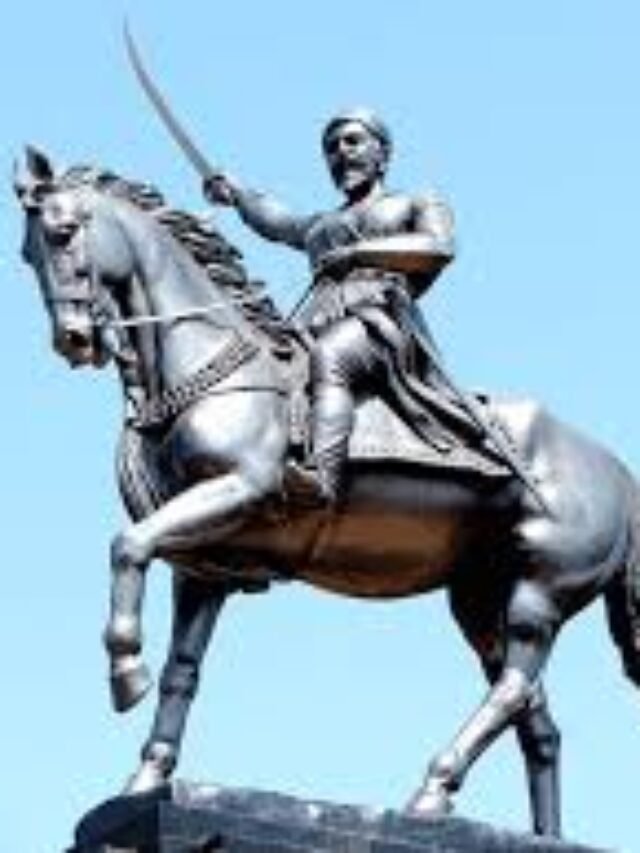Understanding Test Identification Parades in Criminal Investigations
Introduction
Test Identification Parades, often known as “TI Parades,” are a significant part of criminal investigations and legal proceedings. They play a crucial role in helping witnesses correctly identify suspects in crimes. This guide will explain the ins and outs of Test Identification Parades, including their purpose, legal rules, procedures, and important court decisions.
The goal is to provide a clear understanding of how TI Parades work in the criminal justice system.
Why Test Identification Parades Are Important
Test Identification Parades play a significant role in the criminal justice system. They are used to find out if a person the witness points out as a suspect is indeed the one who committed the crime. Witnesses play a key role in this process, and their ability to identify the accused person among a group is crucial for making sure the identification is reliable.
Here are the primary reasons for law enforcement to utilize Test Identification Parades:
- Checking Suspect’s Involvement: TI Parades help confirm whether an individual, unknown to the witness before the crime, may have been involved in the crime or if they can identify property related to the crime.
- Supporting Witness Testimony: The identification made during a TI Parade backs up the witness’s statement in court. It makes the witness’s account more reliable.
- Protecting the Accused: TI Parades also protect the rights of the accused by making sure they are not wrongly accused or convicted based solely on a witness’s word.
Laws for Test Identification Parades: TI Parades are governed by specific laws in India. Understanding these legal rules is crucial for realizing their importance. There are two key legal provisions that control TI Parades:
- Section 9 of the Indian Evidence Act, 1872: This section decides if the identification of the correct accused person and related evidence can be considered in court. But it doesn’t force the accused person to take part in the TI Parade.
- Section 54A of the Code of Criminal Procedure, 1973: This section is used when a witness’s identification of an accused person is needed for investigating a crime. It allows the court to tell the arrested accused to participate in an identification process.
It’s important to note that when the police conduct the TI Parade, they have to follow Sections 161 and 162 of the Criminal Procedure Code (Cr.P.C). But this doesn’t apply when a Magistrate conducts the TI Parade.
When Do We Need a Test Identification Parade
Test Identification Parades are needed when the witness didn’t know the accused person before the crime. This happens when we need to identify the person who committed the crime. It’s especially important when the witness’s ability to identify the accused person is crucial for the investigation and the legal process.
When Is a Test Identification Parade Not Needed
On the other hand, we don’t need a Test Identification Parade when the witness already knows the accused person. If the witness is already familiar with the accused, there may not be a need for a formal identification parade. So, it’s not always necessary, and it depends on the case.
Evidentiary Value of a Test Identification Parade
The evidence from a Test Identification Parade is important for court cases, but it has specific roles:
- Preliminary Identification: The witness is required to re-identify the accused in the courtroom. The identification made during a Test Identification Parade serves as a preparatory step before the main event, which occurs in the court.
- Supporting Witness Testimony: The evidence from a TI Parade can be used to support what the witness says in court. It helps to make the witness’s statement more reliable.
Steps for Conducting a Test Identification Parade
Conducting a Test Identification Parade needs to follow a clear and structured process. Here are the steps to do it correctly:
- Confirm Jurisdiction: Commence by confirming the existence of any mutual arrangements or official circulars issued by the respected District Court concerning the authorized jurisdiction for conducting a test identification parade at that specific Police Station.
- Summon Witnesses: Issue summons to the witnesses, compelling them to be present at the test identification parade.
- Coordinate with Jail Authorities: Communicate with jail authorities by sending a letter to arrange for the necessary preparations for the test identification parade, which includes securing the suspects.
- Obtain Legal Permission: Address a letter to the Additional District Judge (I ADJ) seeking their permission to conduct the test identification parade, and await their approval before proceeding.
- Section 161 Cr.P.C Statements: Ensure that the investigating officer provides Section 161 Cr.P.C statements along with a formal requisition for the test identification parade.
- Assemble Support Personnel: If available, bring a stenographer equipped with a typewriter and an assistant to aid in the proceedings.
- Document Statements: At the jail facility, meticulously record the statements of the witnesses separately. Additionally, record the statements of the suspects involved in the parade.
- Transmit Records to Court: After completing the test identification parade, transmit the records to the concerned court for further legal processing.
These steps are crucial for making sure the Test Identification Parade is done correctly and follows the law. Proper documentation and following the rules are essential to maintain the integrity of the identification process in a legal setting.
Precautions for Conducting Test Identification:
Test Identification Parades need to be handled carefully, and there are some important things to consider:
- Special Characteristics: The value of a test identification parade may diminish if the individual being identified possesses unique features or attributes that distinguish them from the rest of the lineup. Magistrates overseeing the test identification parade should personally take steps to conceal any visible marks or distinctive characteristics on the accused that could assist in their recognition. Furthermore, they should intermingle the accused with individuals who share similar characteristics. Neglecting to implement these precautions can undermine the credibility of the identification evidence.
- Identification Parade for Properties: There are specific rules for doing identification parades related to property. These parades should take place in the Court of the Magistrate where the properties are stored.
- Use of Statements during Test Identification Parade:
Statements provided by witnesses during a test identification parade, which is carried out in compliance with Section 164 of the Cr.P.C., do not possess primary evidentiary weight. Instead, they can be utilized for the specific purposes of corroborating (as per Section 157) or contradicting (under Sections 145 and 155) the Indian Evidence Act. - Description of Culprits in FIR: If the First Information Report (FIR) doesn’t describe the culprits, the Test Identification Parade may not be as effective. This can affect the reliability of the process.
- Avoid Delays: Conduct the identification process as soon as possible. Doing it early helps the witness remember better and keeps the identification more reliable.
Exception for Test Identification Parade
There are certain circumstances where Test Identification Parades may not be obligatory, and the Supreme Court of India has clarified these exceptions through various judgments:
- In the case of State of H.P. v. Prem Chand, the Supreme Court established that a formal test identification parade is not required when the witness already knows the accused and can identify them in a court of law. If there is pre-existing familiarity with the accused, the necessity for a formal test identification parade is diminished.
- The Supreme Court, in Ramesh Kumar v. State of Punjab, reaffirmed the principle set forth in the Prem Chand case, underscoring that a test identification parade is superfluous when the witness is already acquainted with and can recognize the accused in the courtroom.
- In the matter of State of A.P. v. V.K. Venkata Reddy, the Supreme Court ruled that the testimony of a witness in a court of law holds primary significance, and the identification of the accused in the test identification parade primarily serves to validate the testimony presented in court.
- The Supreme Court, in Dana Yadav v. State of Bihar, reiterated its stance, emphasizing that the primary purpose of a test identification parade is to provide supporting evidence for the court identification of the accused. The Test Identification Parade is considered a corroborative tool for the identification made during the trial.
Important Court Decisions on Test Identification Parade
The Supreme Court of India has made important rulings on Test Identification Parades. These judgments provide essential guidance on various aspects of TI Parades:
- Hare Kishan Singh v. State of Bihar: The Supreme Court said if a witness fails to identify the accused during the TI Parade, the court’s identification of the accused becomes unreliable.
- Kishore Prabhakar Sawant v. State of Maharashtra: The Supreme Court ruled that if the accused is caught in the act of committing a crime, a Test Identification Parade may not be needed.
- Kiwan Prakash Pandurang Mokash v. State of Maharashtra: The Supreme Court said if the accused refuses to participate in a Test Identification Parade, it can be seen as a sign of guilt.
- Suraj Pal Singh v. State of Haryana: The Supreme Court clarified that accused persons cannot be forced to take part in a Test Identification Parade.
- State of Maharashtra v. Suresh: The Supreme Court emphasized that Test Identification Parades primarily help investigations, not just court proceedings. They assist in confirming the identity of the accused.
Conclusion
In summary, Test Identification Parades are crucial in the criminal justice system to ensure the accuracy and reliability of witness identifications. They follow specific legal rules and are used to back up witness testimonies in court. Understanding these procedures, legal rules, and court decisions is vital for everyone involved in the criminal justice system, from law enforcement to legal professionals. By following the rules and ensuring proper procedures, the integrity of the identification process is upheld, which is essential for justice and the protection of individual rights.
Frequently asked questions
What is a Test Identification Parade?
A Test Identification Parade, often called a TI Parade, is a process used in criminal investigations to help witnesses identify a suspect from a lineup of individuals. It aims to confirm whether the person pointed out by the witness is indeed the one who committed a crime.
Why are Test Identification Parades important in criminal investigations?
TI Parades are essential because they help verify the accuracy of witness identifications, corroborate witness testimony, and protect the rights of the accused. They contribute to the reliability of evidence presented in court.
What is the legal framework governing Test Identification Parades in India?
In India, the legal framework for TI Parades is primarily governed by Section 9 of the Indian Evidence Act, 1872, and Section 54A of the Code of Criminal Procedure, 1973. These laws dictate the admissibility and procedures for conducting TI Parades.
What precautions should be taken when conducting a Test Identification Parade?
Precautions include ensuring that suspects with distinct characteristics are mixed with others, following specific rules for property-related TI Parades, understanding the use of statements made during TI Parades, addressing delays, and considering exceptions when TI Parades may not be needed.

























